One of the biggest mistakes you can make as a small craft business is trying to make everything! Finding a narrow but popular craft business niche is the best way to find your people and stand out in a crowd.

One of the biggest mistakes I see people making in their small craft business is trying to sell too many things. And I understand! I have a wide range of crafts I like to do and a lot of personal interests that could make for cool ideas for products to sell.
The problem is, when you are too broad, your ideal customers have a much harder time trying to find you. Imagine you are at a craft fair. There’s a seller who has sublimation tumblers, shirts they made using DTF transfers, laser engraved cutting boards, tumblers, and ornaments, crocheted stuffed animals, and hand-sewn aprons. Their booth looks like it belongs at a flea market rather than a craft market.
But across the aisle, there’s a seller who has niched down to just custom laser engraved cutting boards.
Who do you think the customer is going to seek out if they are looking to buy a custom cutting board? More than likely the seller who specializes in them, even if they other seller who does more is selling them for less. This is because the seller who has niched down has made themselves into a expert in the one thing they make and will appear more trustworthy than the other seller who has tables full of random things.
Will the cutting board seller have fewer customers to their booth? Probably. But will more of those customers buy? Definitely.
So in today’s post, I’m going to share my process for finding your craft business niche. You can also download a list of 100 craft business niche ideas to help you get started thinking about what might be the perfect niche for you!
What is a Niche?
I like to think of a niche in two ways. You can look at it by the types of products you make. Or you can look at it as the theme that binds all your products together. There will, of course, be some overlap between the two types of niche, but this should help you narrow things down so you don’t end up with an “everything” booth.
Niche by Product
The cutting board vendor above is an example of a niche by product. They are selling a single product—cutting boards—that could have a variety of designs or styles to them. Maybe some are classic monograms and some have funny sayings. But the niche is engraved cutting boards.
If you decide to niche down by product, know that you’re going to be making the same thing over and over again. This is great for many crafters. For example, maybe you make pottery or you carve wooden bowls. I feel like artisans who work with natural materials often fall into this category.
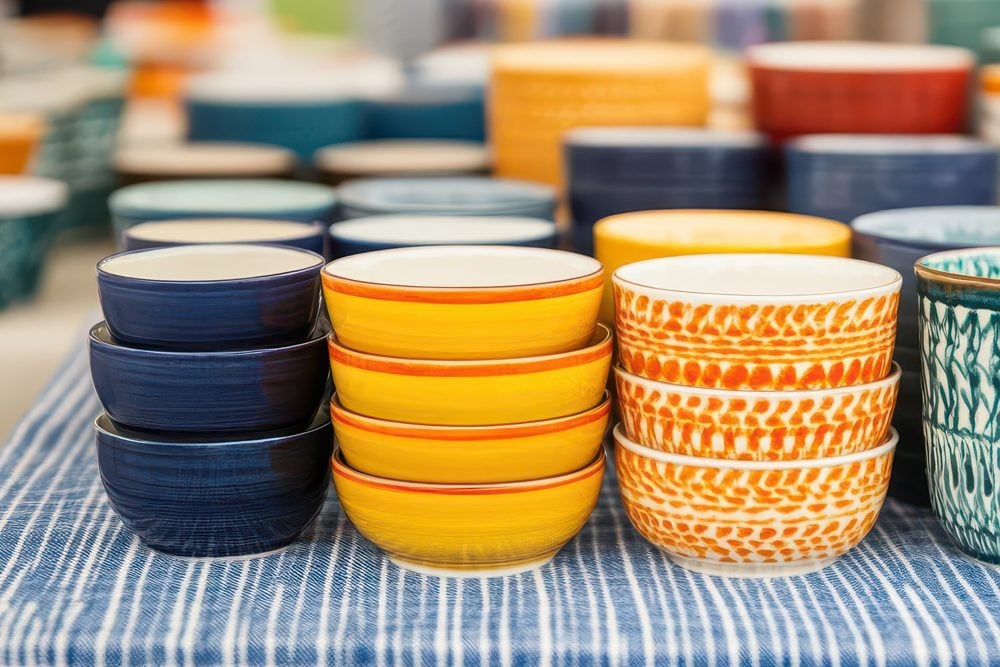
Niching by product is also great for using your resources. You don’t need to buy a bunch of different tools or machines or materials. You just need what you need to make the things that you make. It’s less expensive, takes up less space, and is less overwhelming overall.
Other niches by product might include:
- Crocheted items
- Jewelry
- Sublimation drinkware
- Bath and body
- Handbags
- Furniture
- Glassmaking
- Apparel
- Ceramics
- Candles
- Dolls or other toys
- CBD items
- Painting or illustration
- Cards
- Photography
Niche by Theme
Second up is niche by theme. My handmade business, Chapter & Craft Studio, is niched by theme. I sell a wide variety of products, all with a book theme. So you can get tumblers, bookmarks, tote bags, stickers, and more at my booth. But all of them are appealing to a certain demographic—a woman in her 30s or 40s who loves to read and who watches a lot of BookTok on TikTok. My products are geared to make her squeal when she comes into my booth and sees an art print of her favorite books.
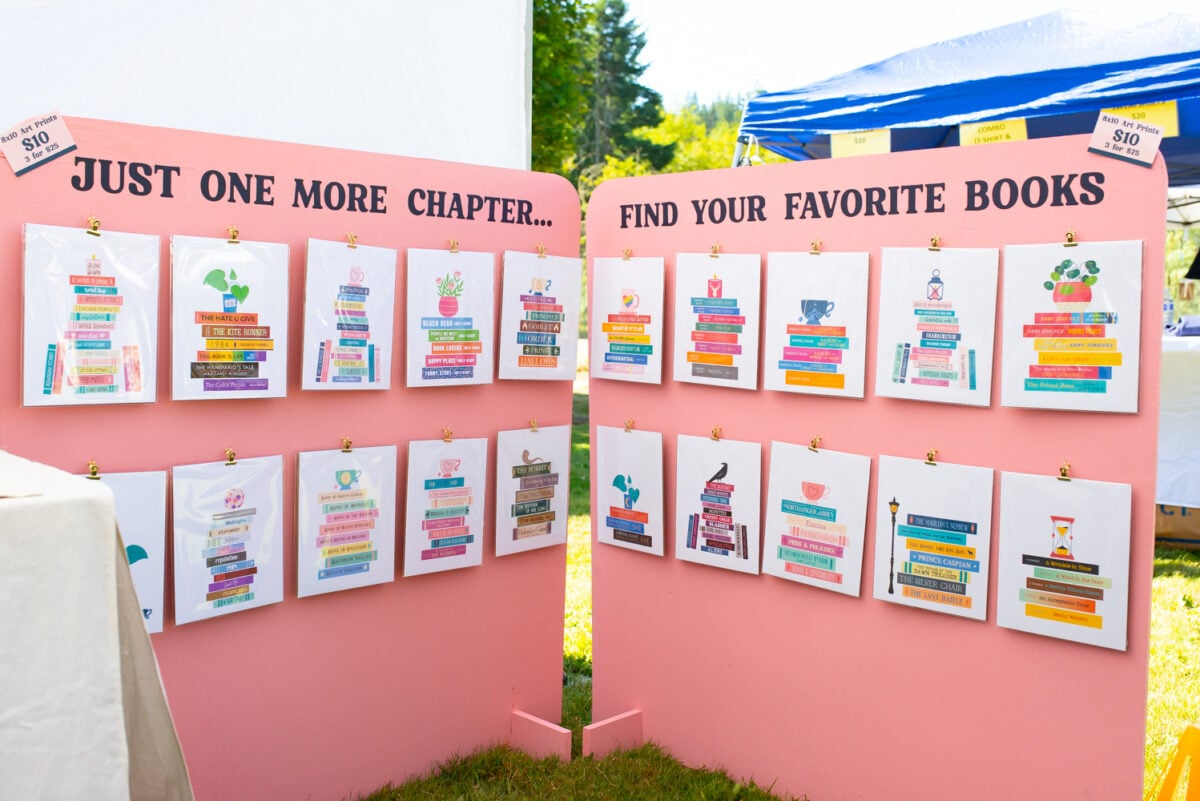
I think niching down by theme is a better choice for people who want to do it all. By creating a cohesive theme for all of your products, you look more like a small business instead of a yard sale.
Here are a few ideas, but download the 100 craft niche theme idea list to get inspired!
- Pop culture or fandom themed items
- Anime-inspired items
- Gaming accessories
- Plant-themed crafts
- Wedding items
- Upcycled fashion
- Upcycled furniture or decor items
- Decor with a theme (cottagecore, boho, minimalist, etc.)
- Holiday-themed crafts
- Party decorations
- Self care kits
- Pet-themed crafts
What’s Popular?
When you’re looking at different craft business niches, also take a look at what’s popular. I mean this both in a broad sense as in what’s popular in pop culture and in our world today, as well as what might be popular with your ideal customer.
For example, I know Taylor Swift is hugely popular with my target audience. But she’s not book themed. So instead, I made one of my book stacks and turned it into her albums instead. This image (which is on all sorts of different products) looks like the rest of my products but is specifically designed to get those Swifties who also love books. It’s one of my best sellers. I also try and find book series and authors who are hugely popular in my niche.
But while Taylor Swift is enormously popular in the world but she might not be popular with the older women who love to buy your handbags. But you find a certain fabric or pattern that appeals to their nostalgia that ends up selling really well. For example, my own mom makes handbags and she uses a variety of fabrics (many of them upcycled). Every time she makes a bag using flour sack tea towels, they sell right away because they appeal to a memory for her ideal customers.
Create a Connection
By niching down and looking at what’s popular with your ideal customer, you are much more likely to create a deep connection. My booth is book-themed crafts and also…I read a lot! I’ll probably get through 120 books this year. Which means not only are people coming into my booth to scope out my book-themed products, when they find something to buy we can bond a bit over the books we both love!
This connection should work for most niches. I went to a booth recently that sold honey and other bee-themed products. I ended up chatting with the vendor about where they keep their bees and about the decline in the bee population locally. I ended up buying three jars of honey (she had a build-a-three-pack with a special gift box…always a great idea) from her and taking her card for when I run out.
If you are selling a whole bunch of items, it’s much harder to connect on a deeper level with your customers. A sale becomes just a transaction. And I believe the whole point of craft markets is to build up our local communities, get our neighbors and friends to shop small, and make people excited to find our booths at the next crafting event.
Finding Your Craft Business Niche
Taking into account everything I mentioned above, let’s work on finding your niche.
Step 1: Identify Your Skills and Passion
First, take into account your craft and what you love to do. For many people this might be obvious. But if you do many things, you’ll want to figure out what you really like to make and can make well over and over again. Quality is key—just because you can make it doesn’t mean you can make it well.
You’ll also want to make sure you’re passionate about most of the craft. You don’t need to have passion about every single thing you do, but overall you want to enjoy yourself! Do I like printing out art prints? Not really. But I sure do enjoy designing them! Do I like scrubbing tumblers after I’ve engraved them? Not particularly. But I enjoy the rest of the process! Make sure you are doing what you love or you’re going to burn out quick.
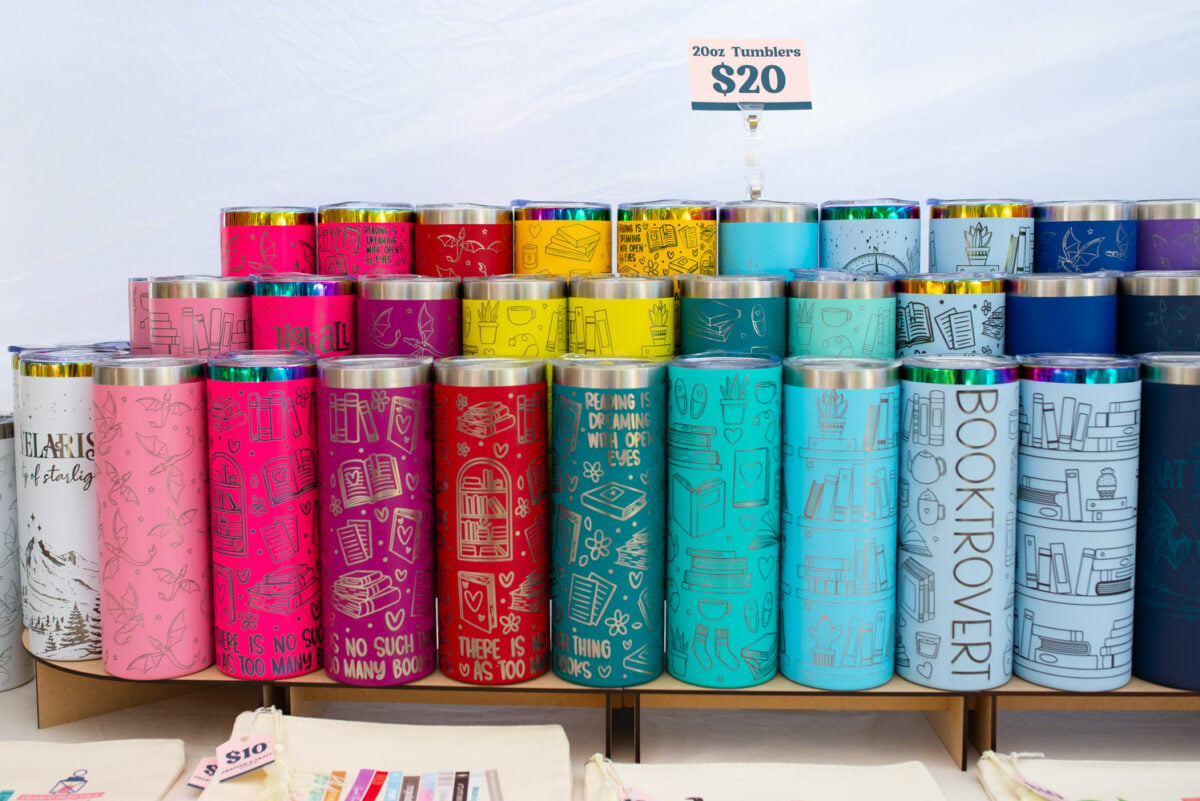
And then you might want to combine all of this with something beyond just crafting. For me, it’s my love of reading and books. Maybe it’s your love of travel and other countries. Or your background as a therapist or teacher or motorcycle rider. Maybe you’re using your experience after you lost a pet to make special pet bereavement gifts. There are a lot of ways you can make your business more personal to you so your passion for it will really shine through.
Step 2: Research Your Market
Everyone’s market is going to be different but you really do need to home in on an ideal customer—and there needs to be a good size audience. Your dear cousin Linda who loves collecting pink dinosaur ballerinas might be your target audience for your pink dinosaur ballerinas, but the whole audience for pink dinosaur ballerinas would be (I assume) very small. It doesn’t matter if you have an ideal customer if there’s only a few of them!
So as you’re thinking about what you want to make, research your market. Do searches on Etsy and Google and see what people are looking for. On Etsy, for example, you can search for a product that you want to make and see what’s out there. What are people charging? Who is making sales? What can you make better than anyone else? You obviously do not want to copy, but data is data and can help you make smart business decisions.
Again, everything you do is going to be tailored for your market. My bookish customers love romance and fantasy more than nonfiction or memoir, so my products are going to be girly and fun and appeal to those women I want to shop there.
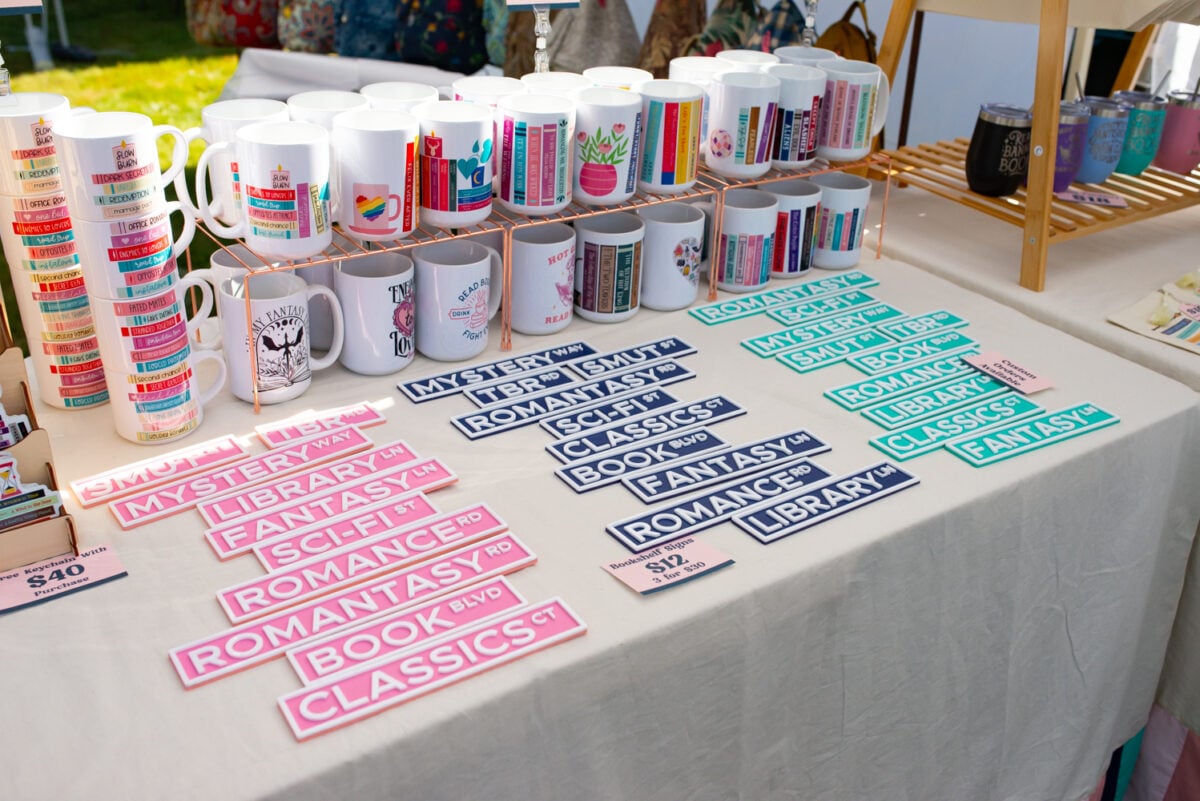
Additionally, I want you to try and find products that could appeal to a wide range of budgets. You may make the most beautiful glass artwork, but that will narrow your market considerably. So maybe think about making some mini art so that people with smaller budgets can still get something of yours they love. People love a tiny deal.
Step 3: Decide on a Craft Business Niche
Now you can start to play with the intersection of what you’re passionate about and what will actually make money!
This may take some testing! I thought my bookish engraved tumblers were going to be a hit at my first few craft fairs and they were one of my lowest selling items. So while I will still have some at my upcoming fairs, I won’t be making anymore unless something takes off that I didn’t foresee.
I also realized that there were a LOT of kids at the craft fairs I’ve done and there should be at the two I have planned for November. And I had…nothing for kids. But kids love books! So I am going to add some bookish kid stuff at a low price point, including stickers, bookmarks, and bookish friendship bracelets (“in my reading era” etc.).
Over time, you’ll start to refine what your audience wants, whether it’s through craft markets or through Etsy. You may want to broaden your niche just a bit to capture new customers, or narrow it a bit or pivot if you are finding that people aren’t connecting with your niche.
Also be flexible and be okay with trying new things and seeing them fail. There’s no need to make or list products that just aren’t selling. Chalk it up to a test and gift them or donate them.
10 Businesses with Great Niches
If you’re looking for inspiration, here are ten makers I follow that have a great craft business niche! Of course, DO NOT COPY. But you can see how they each have a great niche and a lot of sales!
- Cloris Creates
- Cameron’s Cute Creations
- Back to Basics
- Purrs and Stitches
- ZOZO Toys
- Forest Decor Shop
- Lilliput Little Things
- Untie the Bow
- All For Candle
- Designs by MJV
If you have questions about finding a crafting niche, let me know down in the comments!

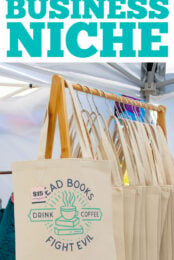


Comments & Reviews
eightballbitter says
Great post steal a brainrot! Choosing the right craft niche is so important — it really helps you stand out and build a loyal customer base.
David Reeves says
I appreciate your insightful post on identifying a niche. I don’t think I’ve found a niche. speed stars
Jan Munn says
Hi! Love your helpful article about finding a niche. I don’t feel like I really have a niche. My business name is’Jan’s Crafty Collections’ but my niche is Cricut and sublimation. I I have a Cricut holding my Cricut machine as my logo on my business card. I have my branding colcrs. My colors are pastels and black. Is my niche too broad? I’m selling sublimated glad cleaning clothes, drinkware, wind spinners, & jewelry. along with paper crafts. Those do cover a lot of things between sublimation and paper. What do you think? Most of my Craft fairs are senior related.
Thank you for any help you can give me.
Jan